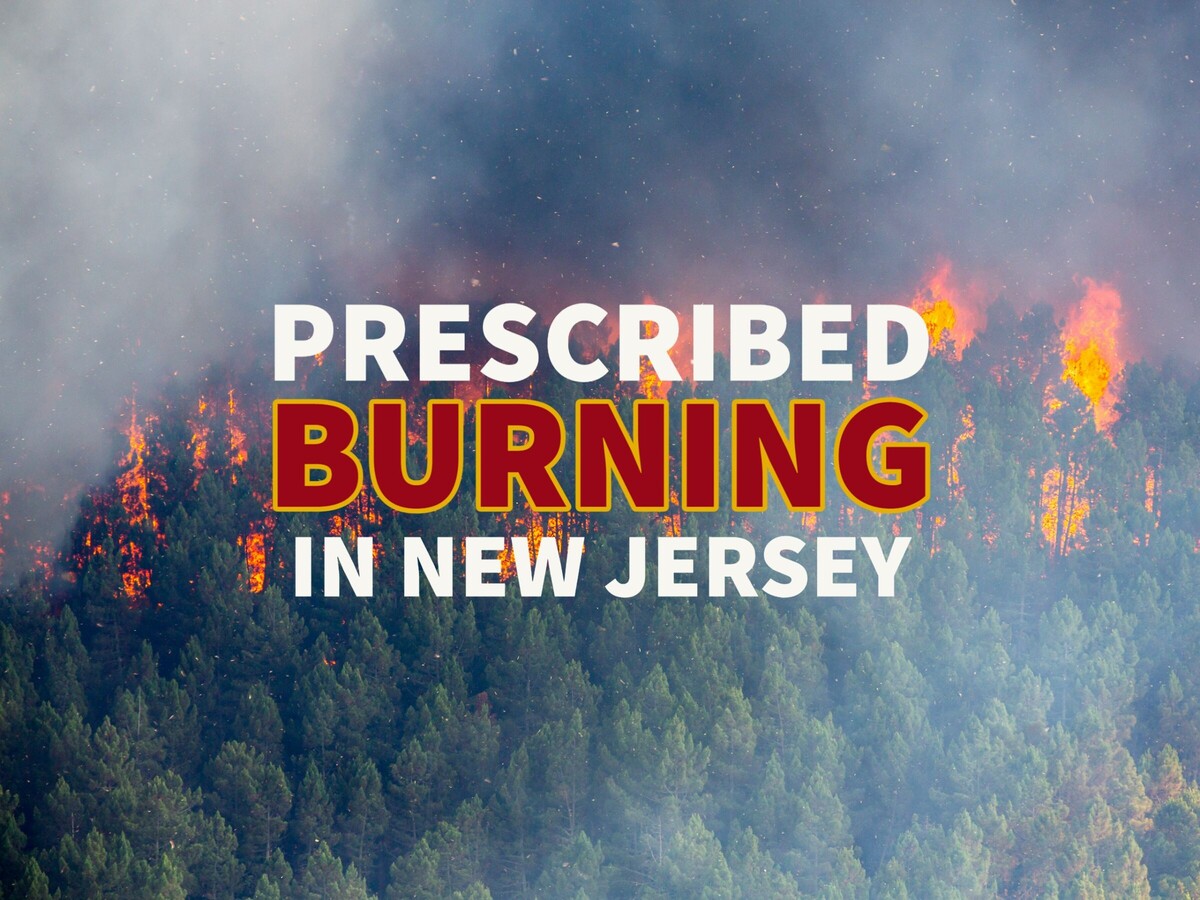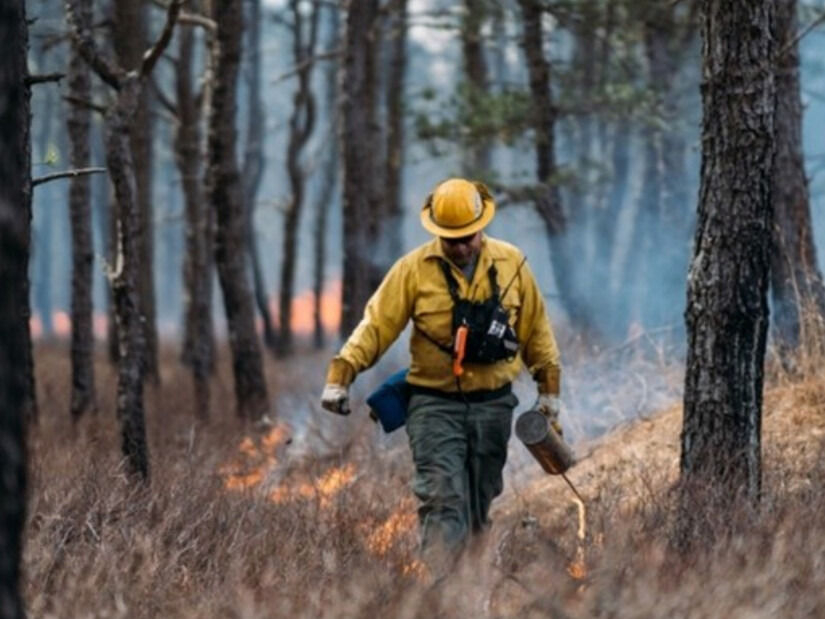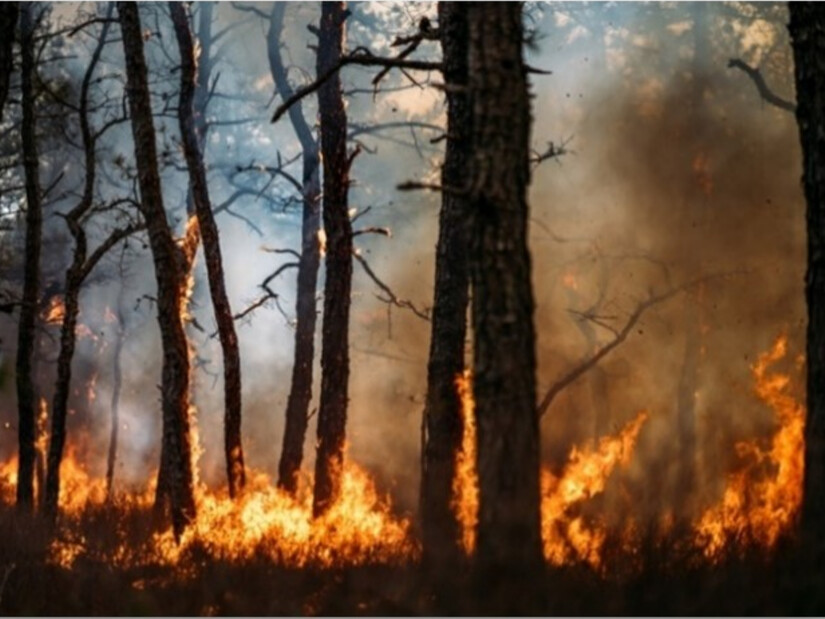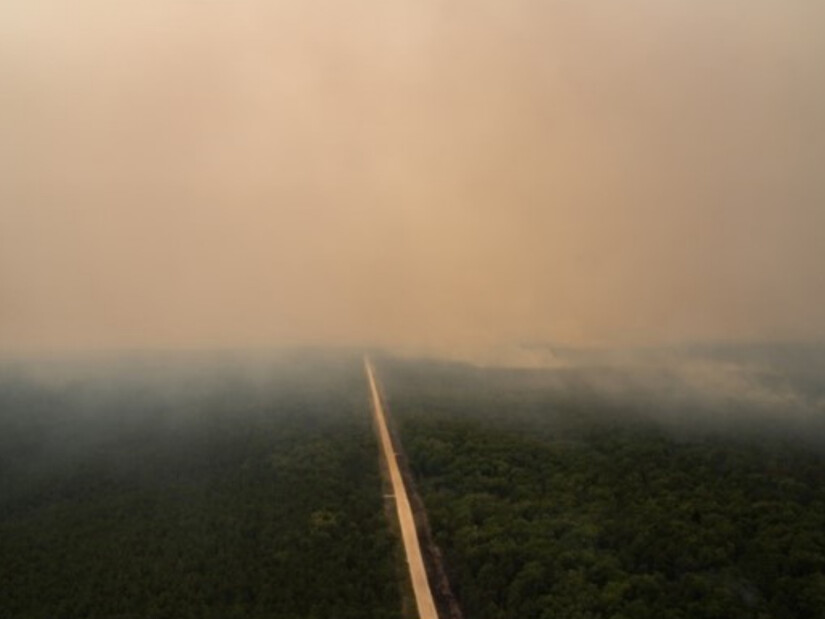Image


New Jersey's Forest Fire Service is taking action to reduce the risk of devastating wildfires by conducting prescribed burns as part of its annual program.
Department of Environmental Commissioner Shawn M. LaTourette announced that the program is currently underway, with the aim of treating 25,000 acres of forests, grasslands, and marsh. The targeted acreage will depend on favorable weather conditions from February through April when most prescribed burning takes place in New Jersey.
Prescribed burning is a vital part of the state's carbon defense strategy, allowing experts to direct the intensity, timing, and interval of fire across the landscape. It improves soil health by promoting nutrient cycling and reducing soil compaction, leading to increased plant growth and carbon sequestration. The burns also reduce the fuel available to support large, high-intensity wildfires that can cause significant carbon losses.
 This year, the Forest Fire Service intends to treat 25,000 acres of forests, grasslands and marsh with prescribed fire.
This year, the Forest Fire Service intends to treat 25,000 acres of forests, grasslands and marsh with prescribed fire.“The importance of prescribed burning in New Jersey’s forests cannot be overstated,” said Commissioner LaTourette. “Prescribed burning is a safe activity that is planned with strategic input from multiple DEP programs to reduce and eliminate the materials that fuel wildfires while protecting public safety. Prescribed burning also helps minimize the adverse impacts of climate change by limiting significant and harmful releases of carbon during wildfires.”
Apart from reducing forest floor fuels, prescribed burning also improves habitat for plants and animals, reduces the presence of damaging insects and ticks, and recycles nutrients into the soil.
Most of the Forest Fire Service's burns will occur on state-owned property such as forests, parks, and Wildlife Management Areas. Still, the service also assists private landowners, nonprofit organizations, and county and municipal governments to meet their management objectives through prescribed burning.
“Prescribed burning is a crucial tool in our efforts to maintain the ecological health and fire resiliency of New Jersey's landscapes,” said John Cecil, Assistant Commissioner for State Parks, Forests & Historic Sites. “By carefully managing fire in a controlled manner, we can reduce the risk of devastating wildfires and conserve the state's rich natural heritage for future generations.”
 Most prescribed burning in NJ takes place from February to April, peak wildfire season immediately follows.
Most prescribed burning in NJ takes place from February to April, peak wildfire season immediately follows.Factors such as wind speed, humidity, temperature, and vegetation density are considered when conducting prescribed burns to accomplish various resource and ecological objectives. While most prescribed burns take place in the spring, a prescribed burn may be implemented in the summer or fall depending on the management objective for a particular area.
The Forest Fire Service has launched the Allen and Oswego Road Fire Mitigation and Habitat Restoration Project in Bass River State Forest. The project, which gained New Jersey Pinelands Commission approval in October 2022, is set to mimic the effects of wildfire through the use of mechanized equipment. Once complete, a 25-foot firebreak will exist on either side of Allen and Oswego roads, 1,305 acres of thinning will remove highly flammable materials known as ladder fuels throughout the area and 13 miles of roadway will be improved, allowing safe and efficient access for emergency vehicles.
“The Mullica River Wildfire which burned 11,129.5 acres in the Wharton State Forest in June of 2022 was a reminder to New Jerseyans that the potential for large-scale wildfires exists in the Garden State,” said Greg McLaughlin, Administrator and Chief of the Forest Fire Service. “Through prescribed burning and developing forest management plans strategically in key areas of forest, we can help limit the spread of a major wildfire across the landscape, saving lives and property and aiding in protecting firefighters.”
 Prescribed, or controlled, burns can cause severe vision impairment on the roads.
Prescribed, or controlled, burns can cause severe vision impairment on the roads.The Forest Fire Service's Facebook and Twitter accounts provide daily notifications of prescribed burns, and residents can also view where upcoming prescribed burns will be taking place in their communities on a Prescribed Fire Notifications map at njwildfire.org, or sign up for email notifications here.
Motorists are reminded to use caution when approaching areas where prescribed burns are taking place, pay attention to reduced speed limits, and be alert to the presence of Forest Fire Service trucks and personnel that may be working alongside roadways.
New Jerseyans are reminded that peak wildfire season often directly follows the prescribed burn season. When in doubt about the source of smoke or whether a fire is part of a prescribed burning operation, call 1-877-WARN-DEP (1-877-927-6337) or 911.